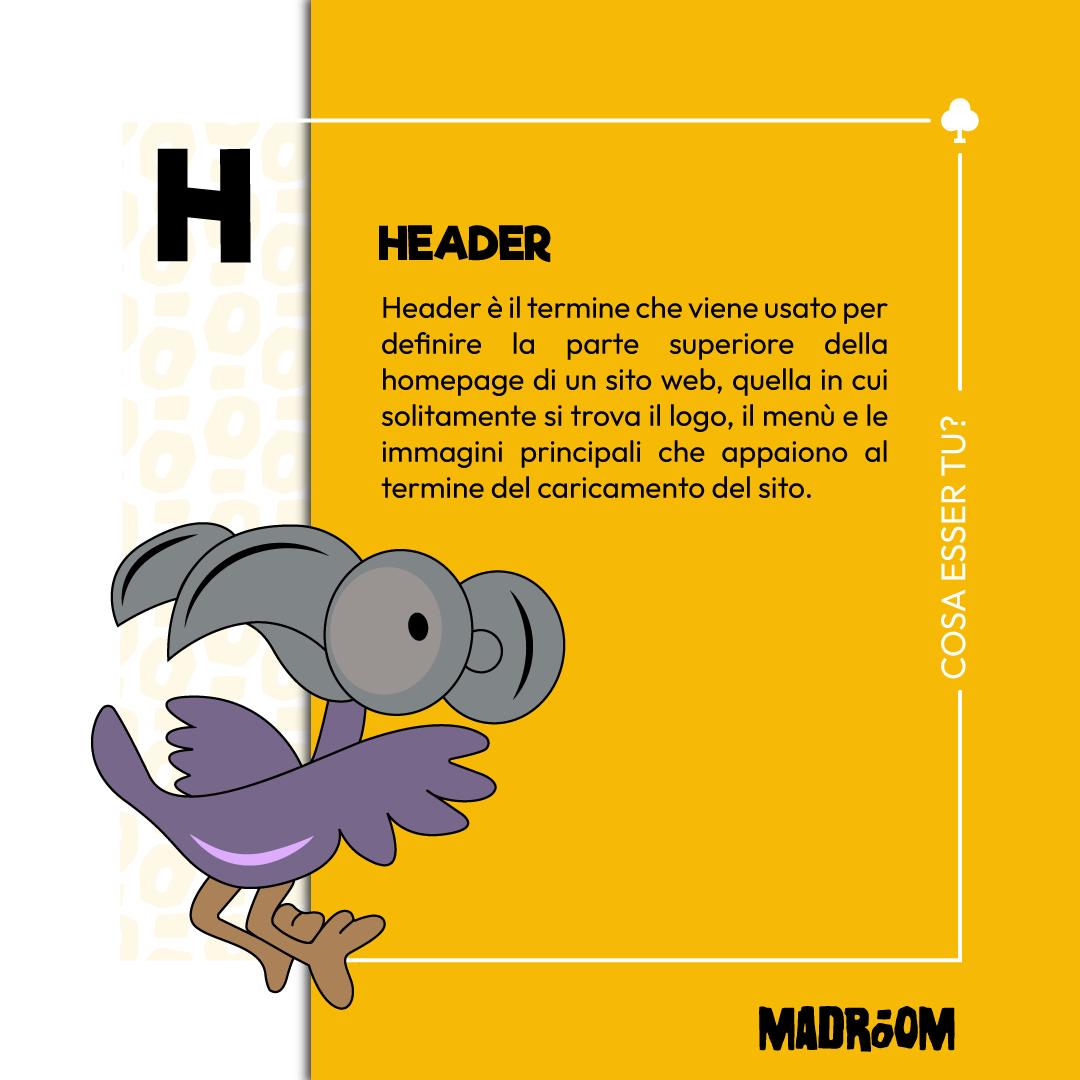Header
Introduction
The world of web design and web development is constantly evolving, most websites have a structure that can be divided into different sections each of which covers a certain function the sections are: header, main content and footer. This article is helpful in clarifying what a header is, what its importance is, and what common elements we find.
What is a Header and what is its Importance?
The header of a website is the section placed at the top of a web page and generally contains key elements such as the website logo, the navigation menu and contact information. Its importance is multifactorial:
- Intuitive Navigation: the header provides an immediate access point to the main sections of the site, facilitating user navigation and enhancing the overall experience.
- Brand recognition: the site logo placed in the header contributes to brand recognition, a key element in building a strong online identity.
- Search Engine Indexing: elements in the header provide clear information about the structure of the site to search engines, facilitating indexing and ranking in SERPs.
- Placement Factor SEO: a well-structured and optimized header can positively influence a website's overall search engine ranking.
What common elements do we find?
- Logo: the site logo is often placed in the left corner of the header and represents the visual identity of the brand.
- Navigation Menu: A well-structured menu makes it easier for the user to navigate through the site. It can include categories, main pages, and links to key sections.
- Contact Information: Providing contact information directly in the header can increase user trust. This information can include email address, phone number, or links to contact pages.
- Interactive Elements: depending on the site, the header may include interactive elements such as search buttons, social media icons, or links to special pages.
- Usability and User Experience: a well-structured header improves site usability, allowing users to easily find what they are looking for. A good user experience is a relevant factor in search engine rankings.
- Content Indexing: elements in the header, such as navigation links, help search engines understand the structure of the site and index content effectively.
- Reducing the Rebound Rate: a clear, eye-catching header can reduce the bounce rate, indicating to users that they have found what they are looking for. This can have a positive impact on ranking.
- Mobile Responsiveness: the header must be designed to be responsive on mobile devices, as search engines consider mobile compatibility to be a relevant factor
Conclusion
In summary, the header of a website is a key element for online success. By optimizing it properly, we not only improve the user experience but also positively influence search engine rankings, ensuring that our site is easily accessible and understandable for everyone. Investing time and energy in header design and optimization can make all the difference in the competitive world of the Web.
The world of communication is full of terms that can appear complex. Do you want to discover other items in the glossary of communication?
Discover the communication glossary on our social channels as well:
